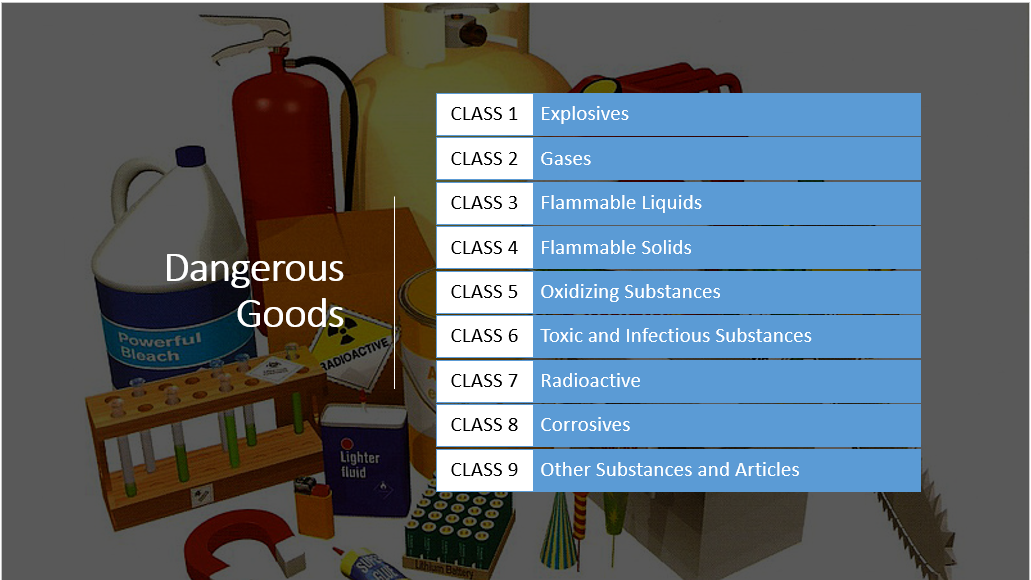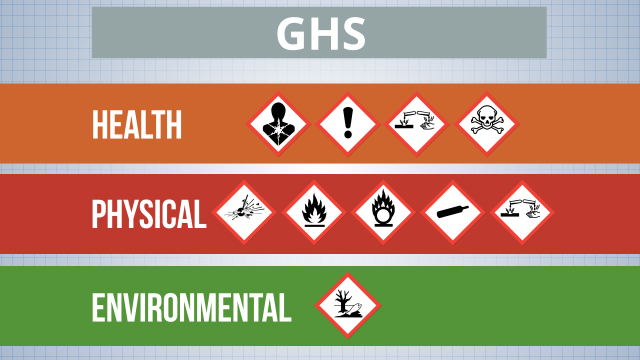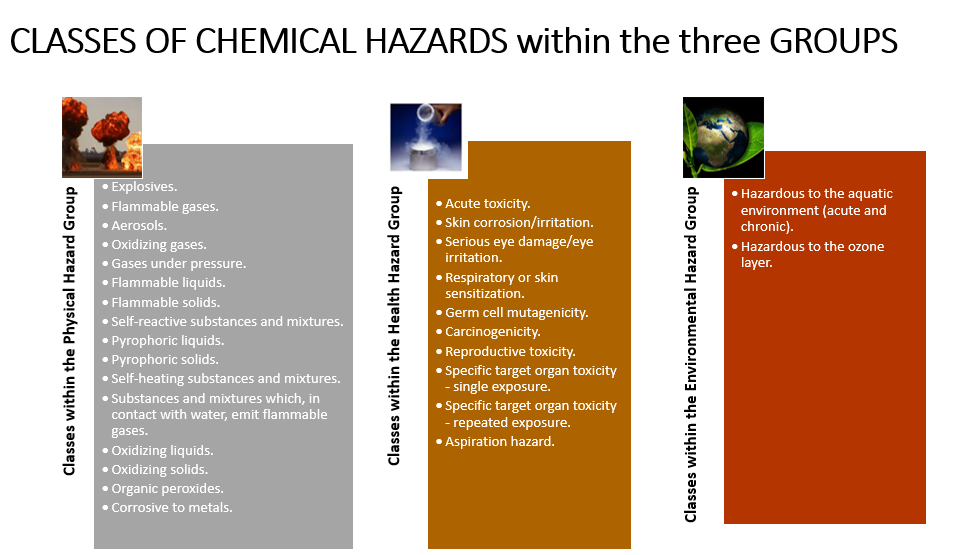Not all hazardous chemicals belong to dangerous goods and not all dangerous goods are hazardous chemicals.
Dangerous Goods
Dangerous goods or more known as hazardous materials such as solids, liquids, or gases can harm people, other living organisms, property or the environment. Any goods listed in the dangerous goods list or meeting dangerous goods classification criteria for 9 classes will be regarded as dangerous goods.

Click here to view a video that explains hazardous goods.
Hazardous Chemicals
Generally speaking, hazardous chemicals refer to chemical substances or mixtures that may pose harm to facilities/property, human health and the environment. Hazardous chemicals are substances that can cause adverse health effects such as poisoning, breathing problems, skin rashes, allergic reactions, allergic sensitisation, cancer, and other health problems from exposure. Types may include:
- Chemicals
- Products containing chemicals
- Fumes
- Dust
- Vapours
- Mists
- Gases and asphyxiating (suffocating) gases
- Biological agents (germs)
GHS (Globally Harmonized System Of Classification And Labelling Of Chemicals) In South Africa
The Hazardous Chemical Substance Regulations under the Occupational Health and Safety Act require that manufacturers, importers and suppliers of hazardous chemical substances for use at workplace provide free safety data sheets that are compliant with ISO 11014 or national standards.
GHS covers all hazardous chemicals and may be adopted to cover chemicals in the workplace, transport, consumer products, pesticides and pharmaceuticals. The target audiences for GHS include workers, transport workers, emergency responders and consumers.
|
Category |
Standards |
|
Classification and Labelling |
SANS 10234-2008-A: List of classification and labelling of chemicals in accordance with the Globally Harmonized System (GHS) |
|
Safety data sheets |
Standard 16-section SDSs. SANS 11014:2010 Safety data sheet for chemical products - Content and order of sections |
GHS Hazard Groupings
There are three major hazard groups:
- Physical hazards.
- Health hazards.
- Environmental hazards.

Within each of these hazard groups, there are classes and categories.

Safety Data Sheets

The GHS SDS has 16 sections in a set order, and minimum information is prescribed.
Hazard Statement –This hazard statement would appear both on the label and on the SDS.
Precautionary Statement – These statements are standardized phrases that describe the recommended steps to be taken to minimize or prevent adverse effects from exposure to or resulting from improper handling or storage of a hazardous product.
Signal word – There are two signal words used by the GHS – Danger and Warning. These signal words are used to communicate the level of hazard on both the label and the SDS. The appropriate signal word to use is set out by the classification system. Category 1 is dangerous while category 2 is a warning.
Pictogram – refers to the GHS symbol on the label and SDS. Not all categories have a symbol associated with them.
Class – Class is the term used to describe the different types of hazards. For example, Gases under Pressure is an example of a class in the physical hazards group.
Click here to view a video that explains the GHW three classification groups.